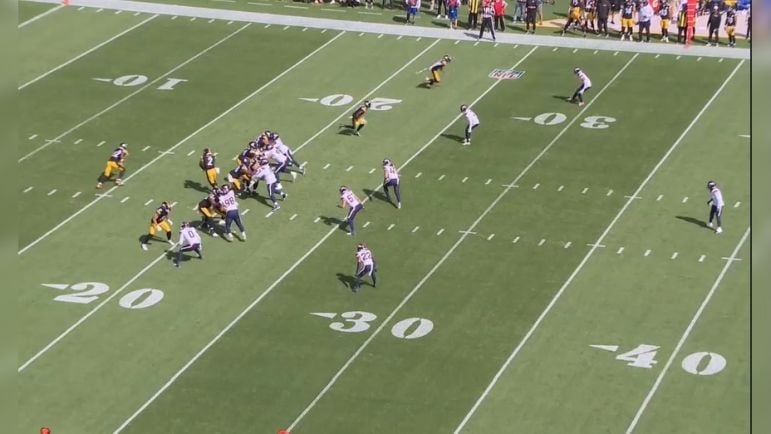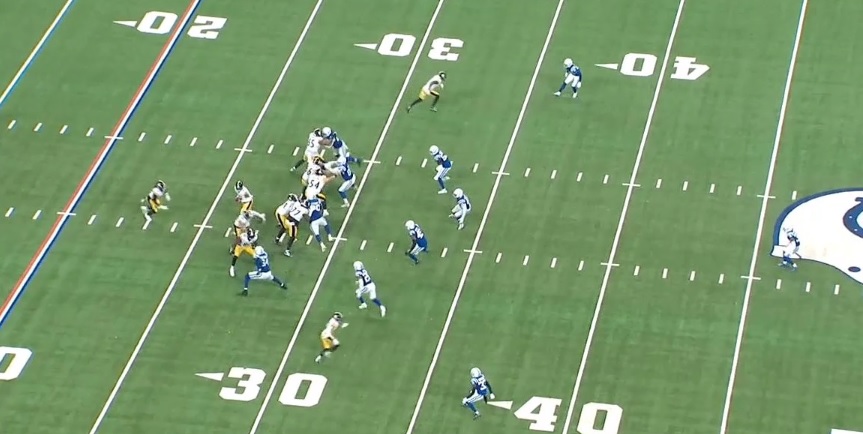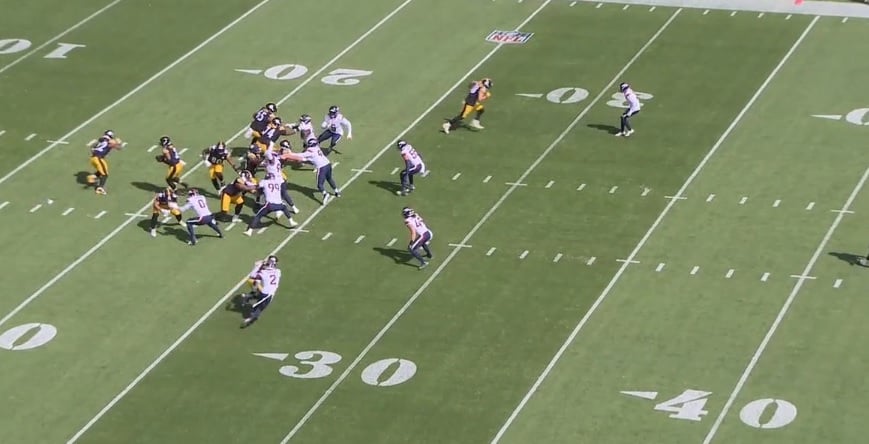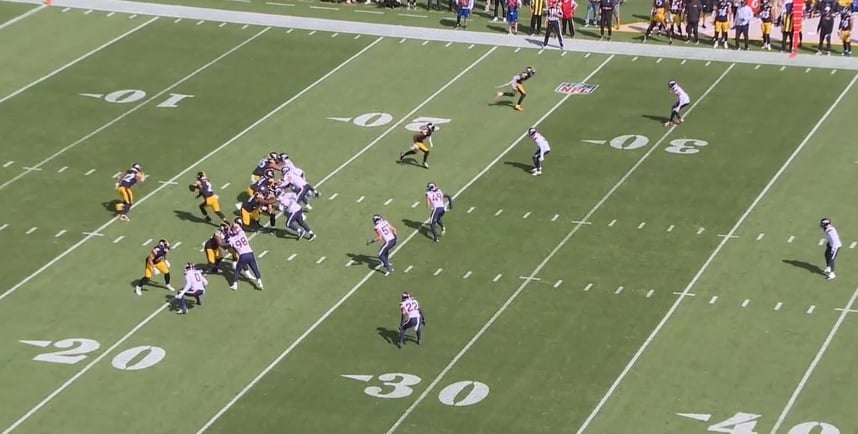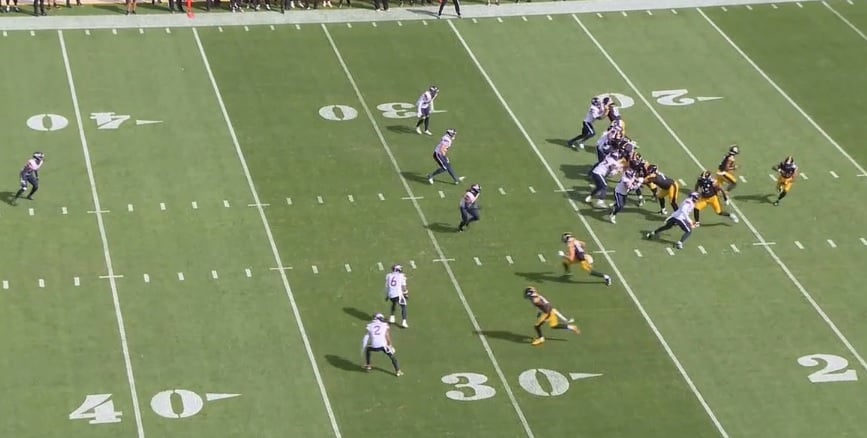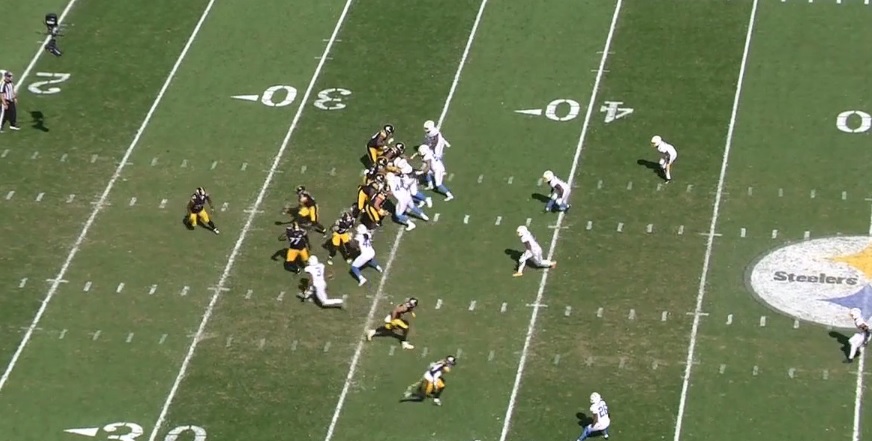The one thing we knew Arthur Smith would bring to Pittsburgh was play-action. Through four games, the Steelers have had more than their fill of it. In 2023, even including the final stretch following Matt Canada’s firing, the Steelers used play-action on 90 snaps. Under Smith in 2024, the Steelers have already used it 49 times.
Using it is one thing. Seeing results is another. One month in and the Steelers haven’t seen that return on their investment. Using the weekly charting that our Tom Mead provides, we can break down Justin Fields’ numbers with and without play-action. Those are broken down before in key categories: completion percentage, yards/yards per attempt, touchdowns and interceptions, first-down rate, sacks, and QB rating.
The chart below doesn’t include scrambles.
| Play-Action | No Play-Action |
|---|---|
| 26/35 (74.3%) | 51/74 (68.9%) |
| 187 Yards (5.3 YPA) | 643 Yards (8.7 YPA) |
| 0 TD 0 INT | 3 TDs 1 INT |
| 25.7% First-Down Rate | 32.4% First-Down Rate |
| 4 Sacks | 6 Sacks |
| 86.1 QB Rating | 103.6 QB Rating |
Play-action has only produced better numbers in completion percentage and that’s largely due to the shorter passes those have resulted in. Otherwise, the numbers are down with play-action. A yards per attempt that’s three yards lower compared to non play-action. No touchdowns. A first-down rate that’s lower by nearly seven points. A higher sack rate and a substantially worse quarterback rating.
Even breaking it down by shotgun/pistol play-action and under-center “true” play-action, the latter isn’t much better. Under center, the first-down rate is still lower compared to no play-action, the yards per attempt only rises to 5.8, and Fields has been sacked three times.
So play-action is up but its effectiveness is down. What’s the issue? Like anything, there are layers to it. Some of the play-action is designed to be short, bootlegs in the flat for a couple of yards, not huge gains. But the deep shots? They haven’t been working. Below is a cut-up of a couple of the team’s vertical attempts that didn’t fool or sucker in the defense.
While we could comb through the play-by-play and break down each clip, I have two takeaways of why these haven’t been effective.
1. High hat. Defenders don’t always key the ball or the back. They know those things can be deceptive. So they read the hat of the lineman. “High hat,” the lineman upright off the snap of the ball, indicates a pass. “Low hat” indicates a run-blocking posture. When your whole line presents high hat on the snap, it tells the linebackers and secondary it’s a pass and to get depth, not get suckered in by the play fake.
2. Poor play fakes. This is on Justin Fields. You have to sell the fake, not half-heart it. Too often, Fields isn’t carrying out a great fake. He might show the ball to Harris but pull it away before it even gets to him. Sometimes, he doesn’t even do that. Here are screenshots of some of the fakes.
Some of that can be on the running back for also not executing a better fake and there could be some other variables behind the scenes. Sometimes fakes don’t get carried out because of pressure or play call. But they will go a long way toward really selling play-action. Those details matter and can be the difference between an open receiver downfield or everyone being covered and a designed deep-shot attempt ending in a checkdown. For the Steelers’ play-action to improve, their fakes have to get better.

